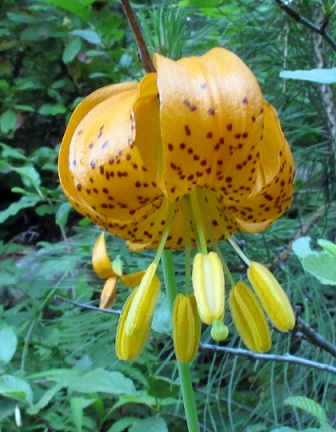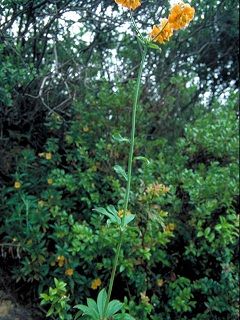True to Lilium pardalinum heritage, this subspecies grows usually between 30 to 48 inches tall, from single to several stems with nodding bell-shaped flowers numbering between 2 and 35 per plant. Leaves on large plants are in 3 or 4 whorls along the stem and are from 2 to 5 inches long. In smaller plants the leaves are scattered. The yellow-orange or orange flowers are uniformly colored and have magenta to brown spots. The pollen is pale yellow to pale orange.
|
|
|
Hansen's Northwest Native Plant Database |
|
|


